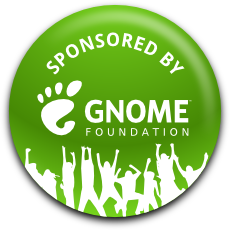It’s that time of year again, time for a belated reflection on the GUADEC conference!
In August I traveled to Thessaloniki, Greece, to attend first the annual GNOME Foundation board handover day, then the advisory board meeting, then the GUADEC conference and associated unconference days.
The board discussion focused quite a lot on the strategic goals for the GNOME Foundation which you can hear more about in executive director Neil McGovern’s talk. Nuritzi has also blogged about the process of putting together these strategic goals.
One of the goals that’s most important to me personally (and in fact, in a slightly different form it was part of my original candidacy statement the first time I was elected to the GNOME Foundation board) is:
Evaluate and adopt new technologies to stay competitive with proprietary desktops.
In the evening after the board handover I got a chance to talk about this with some GNOME people over gyros and why I think it’s important — but that’s a topic that could fill an entire blog post! And I intend to publish one at some point.
I’d like to describe some of the talks that I thought were highlights during the conference days.
Setting a Positive Voice For GNOME, Britt Yazel (video) — One of a surprisingly large number of talks this year about how a large free software project is made up of humans, something which people tend to forget.
Hack: Embedding Learning Tools in the OS, Meg Ford / Manuel Quiñones (video) — This is a great talk about some of the cool stuff in a project which is quite familiar to me; as I had worked on it for a year. I had not really gotten a chance to take a step back and see how cool it actually is, and this talk brought that home for me.
Environmentally Friendly GNOME, Philip Withnall (video) — Fantastic use of the relatively little data we have, to do quite a lot of order-of-magnitude calculations about GNOME’s environmental footprint, as well as suggestions on how to reduce it.
About Maintainers and Contributors, Georges Basile Stavracas Neto (video) — Another talk about humans, and one of the reasons why I think this conference will be regarded as a turning point in GNOME’s history. Georges talks honestly about the struggles that many of us face when we become the public face of a well-known project.
Free Software / Utopia, Deb Nicholson (video) — A strong closer for the conference, and a strong statement of values for a community that is — sorry if I sound like a broken record — made up of humans. I fully support the idea that we shouldn’t just try to equal proprietary software, but to do better, not only technically, but in our treatment of humans!
There were a lot of difficult decisions to make as to which conference track to follow and I ended up switching back and forth a lot, and in addition I was rehearsing my own talk. This meant I still had to miss some things that I would have liked to attend, like (unfortunately) the workshops on Saturday.
On Saturday there was also the annual meeting of the GNOME Foundation, but I think plenty of other people have blogged about that already.
On Sunday I delievered my talk (video, slides) and started to run out of time near the end, so the video shows how I gradually started talking faster and faster… Happily, a few people expressed interest in taking on some of the projects for GJS that I suggested in the talk, and I hope that when the next round of Outreachy and Google Summer of Code internships come around I will be able to be a mentor again.
During the unconference days I did not actually stick very much to the published schedule; I was mostly occupied with hallway conversations. I spent one day with the travel committee talking about what we could do to improve the travel sponsorship process, and taking advantage of the fact that most of the committee was in the same place to review the open tickets.
I also spent some time hacking on GJS, both by myself and with others: Meg Ford and Marco Trevisan started fixing some GJS bugs.
The last day was filled with a whirlwind tour of the many museums of Thessaloniki — anyone who knows me personally knows that I love museums and could have stayed for many more hours in each museum.
Thanks to the GNOME Foundation for sponsoring my attendance.




